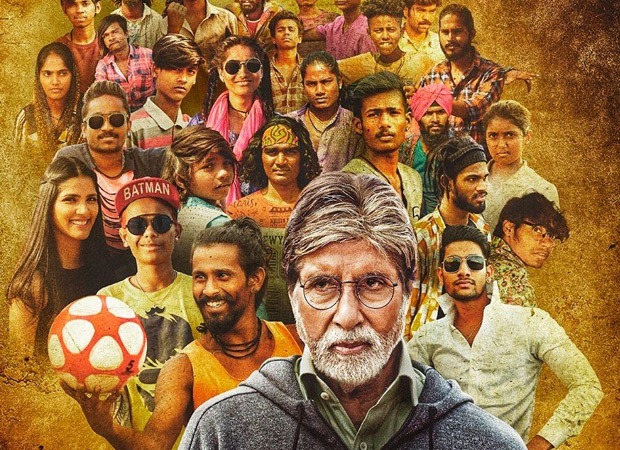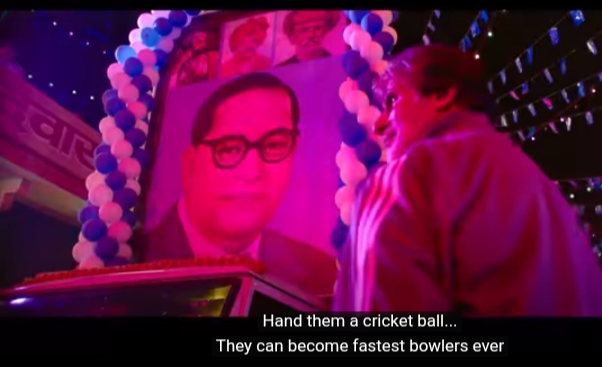
Nagraj Manjule weaves in caste angle in sports drama Jhund

In the 2014 Tamil film, Jeeva, director Suseenthiran had effectively showed how caste creeps into the world of sports, especially in games such as the Brahmin-dominated cricket.
Pa Ranjith too discussed caste in a subtle way in his films like Madras (2014) and Sarpatta Parambarai (2021). In Madras, he tapped into the skills of footballers from north Chennai, while in the more recent Sarpatta Parambarai, he portrayed how a scheduled caste youth (Kabilan played by Arya) from north Chennai (already identified as the place of depressed and oppressed classes) suffers because he belongs to the lowest rung in the caste hierarchy.
Bollywood has had its share of showing caste in films from the time of Bimal Roy (Sujata) and Shyam Benegal (Ankur). But, Hindi cinema seems to be recently weaving in the caste angle in sports dramas. The Amitabh Bachchan helmed Jhund is truly an excellent example of a film brilliantly blends the caste narrative with a sports-themed screenplay.
A feel-good biopic
Acclaimed Marathi filmmaker Nagraj Popatrao Manjule makes his directorial debut in Hindi cinema with Jhund. He had already created waves through his two Marathi films Fandry (2013) and Sairat (2016), which had centred around caste hierarchy and the chilling atrocities found in the interiors of Maharashtra such as Ahmednagar and Solapur. While Fandry had won Nagraj Manjule the National Award as debut director, Sairat bagged him 11 Filmfare awards in 2017.
Jhund is based on the life and work of Vijay Barse, the man who founded Slum Soccer, an organisation helping underprivileged children by training them in football. Barse was formerly a sports teacher with Hislop College in Nagpur, Maharashtra.
In 2002, he founded Slum Soccer after seeing some slum children playing football with broken buckets. After he trains the children in football, he finds that the game helps them to stay away from indulging in anti-social activities like chain-snatching, consuming drugs, etc.
Barse had also conducted a national level soccer tournament and when he was invited to South Africa in 2007 to witness the Homeless World Cup football tournament, he meets anti-apartheid leader Nelson Mandela and considers his appreciation as a big recognition of his work.
In this film, Bachchan essays Barse’s role as Vijay Borade. In the first half of the film, he struggles to get accepted by the slum children and even lures them to play football by paying them money. Later on, he wins over the children with his affection.
Also read: ‘Sairat’ director Nagraj Manjule saw Bachchan’s ‘Satte Pe Satta’ 50 times
An ordinary sports drama, narrated differently
Jhund’s theme is old – ordinary people achieving extraordinary things. The audience knows from the beginning the underdogs are going to be successful in the end. But how they achieve their goal makes this film stand out from other sports films.
For example, in the 2019 Tamil film Bigil, girls from diverse backgrounds train and finally achieve success in an international level football tournament. But that success, like most sports films, is featured in the climax. But in Jhund, the slum children prove that their natural skills are far superior than the well-trained college team and show off their mettle in the first half of the film. So, what else is shown in the film?
Borade stokes their passion and encourages them to take part in an international level tournament. It is then the film zeroes in on the challenges the players encounter as they try to complete the necessary procedures to get a passport from getting an Aadhaar card, no objection certificate, police verification etc. They also have to contend with a case filed against Borade’s Slum Soccer by the Mumbai Football Association that forms the second half of the film.
While narrating the difficulties, Manjule portrays how caste plays a role in curtailing the rights of the teenage slum children. Like his earlier Marathi films, in Jhund, Manjule shines light on the caste system prevailing in Nagpur.
Manjule’s films are usually received well in Tamil Nadu. When Sairat released, Tamil audiences compared it with Tamil film Kaadhal (2004). Though the plot in both the films was same – a boy from a lower caste elopes with a dominant community girl – Sairat showed the ‘honour killing’ but Kaadhal revolved around the ‘honour’ sans any killing. Also, Pa Ranjith’s Neelam Cultural Centre hosted Manjule in one of its programmes in Chennai four years ago.
 When Big B pays respect to Ambedkar
When Big B pays respect to Ambedkar
One of the most significant scenes in Jhund is when Big B pays respects to Dr BR Ambedkar. In a song sequence, Nagraj Manjule shows Bachchan paying respects to Ambedkar’s portrait with folded hands.
This scene is a giant leap in Bollywood films. After all, Bachchan had been a politician in the 80s and served as a Lok Sabha MP from Congress and his wife Jaya Bachchan is a member of the Samajwadi Party, a party for Yadavs, a dominant community in Uttar Pradesh. Moreover, Big B has never taken a stand against the BJP. So, when this stalwart pays respect to Ambedkar, a leader of the oppressed classes, it turns out to be a critical moment in Hindi cinema.
In Kaala (2018), when Rajinikanth wore a black and black attire, there was a huge reaction not only from his fans but also from the Dalit community. Seeing superstar Rajinikanth wearing a black kurta and black dhoti seemed like a major recognition of Dalits, which is quite rare in commercial Tamil cinema. So, it seems Indian cinema is not shying away from boldly addressing caste issues on the silver screen.

